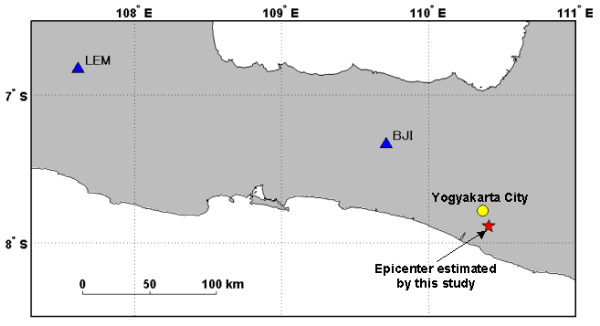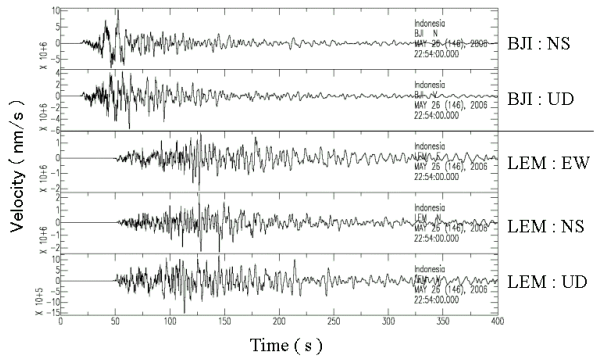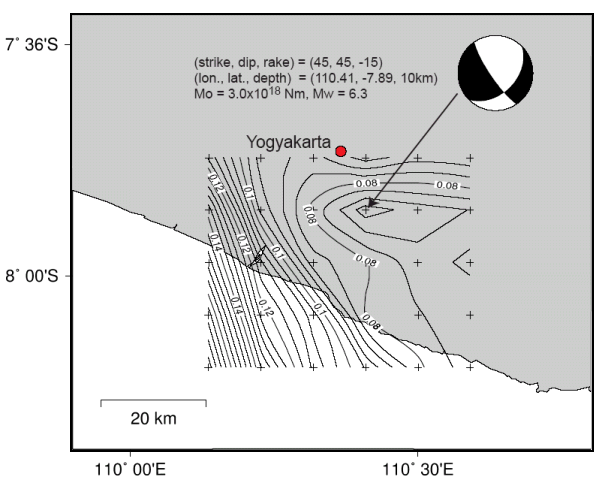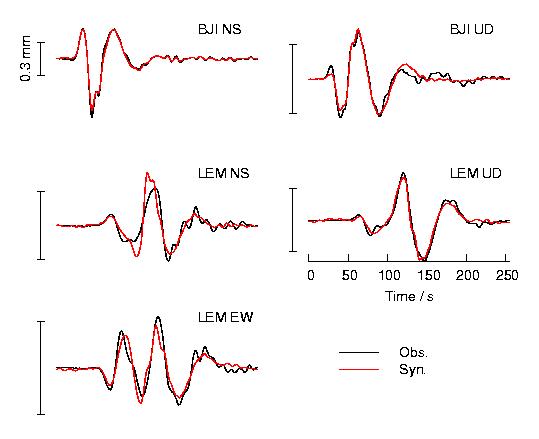|
Source mechanism analysis of the Java earthquake (May 26, 2006) using waveform data obtained by the Indonesian broadband seismograph network (Realtime-JISNET)
M. Nakano, H. Kumagai, K. Miyakawa, T. Yamashina, H. Inoue, and M. Ishida
International Seismic Network Laboratory
National Research Institute for Earth Science and Disaster Prevention (NIED)
- Abstract
-
We estimated the source location and mechanism of the Java earthquake that occurred on May 26, 2006, using waveform data obtained by the Indonesian broadband seismograph network (Realtime-JISNET) operated by Indonesia Meteorological and Geophysical Agency (BMG) and NIED. Our results indicate that the source was located approximately 10 km SSE of Yogyakarta City at a depth of 10 km beneath the surface. The moment magnitude (Mw) was estimated as 6.3.
- Data
-
We used three-component waveform data acquired by CMG-3T EBB (0.02-360 s) at BJI and LEM stations of Realtime-JISNET (Figure 1). Waveform data were not available for the EW component at BJI due to a trouble of the seismometer in this component.

Figure 1. Locations of seismic stations (BJI and LEM) of Realtime-JISNET used in our analysis.

Figure 2. Observed broadband seismograms at BJI and LEM stations.
- Method
-
In the present analysis, we assumed fault slip (or double couples) as the source mechanism of the earthquake to stably estimate the solution with a limited number of stations. We performed waveform inversion to estimate source time functions of moment-tensor components with fixed strike, dip, and rake angles in the frequency domain. We conducted a grid search with respect to strike, dip, and rake angles as well as space to find the best-fit source mechanism and location. The observed waveforms were bandpassed between 50 and 100 s for our waveform inversions to minimize the effect from complexity of rupture processes.
- Results
-
As shown in Figure 3, the minimum residual is found at a location approximately 10 km SSE of Yogyakarta at a depth of 10 km beneath the surface. The source location is well constrained in our inversion using near-field waveforms. The estimated source mechanism and waveform fits are displayed in Figures 3 and 4, respectively. The source mechanism is dominated by a strike slip component with the moment magnitude (Mw) of 6.3.

Figure 3. Contour plots of spatial distributions of the residuals and the estimated source mechanism.

Figure 4. Waveform fits between observed (black solid lines) and synthesized (red solid lines) seismograms.
International Seismic Network Laboratory
National Research Institute for Earth Science and Disaster Prevention (NIED)
|



